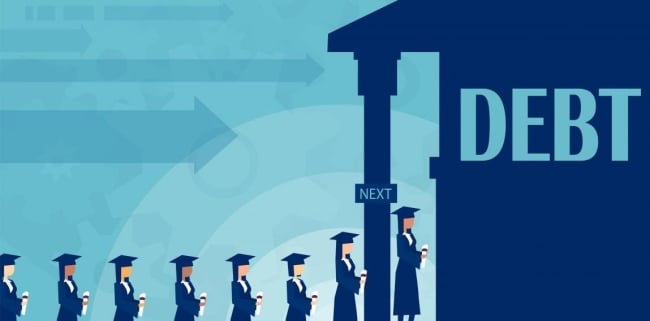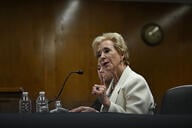You have /5 articles left.
Sign up for a free account or log in.

Feodora Chiosea/Istockphoto.com
A poll conducted by NPR and Ipsos found that although debt forgiveness is popular among Americans, a majority would prefer the Biden administration focus on efforts to make college more affordable.
The poll of over 1,000 Americans provided a look into what both borrowers and individuals without student debt think about various aspects of President Biden’s promised plan to cancel at least some student debt.
Over half of all respondents, both those who have loans and those who don’t, support a move by Biden to relieve at least $10,000 of student debt per borrower, which has been reported to be the administration’s most likely proposal. On the other hand, 82 percent said that Biden should prioritize making college more affordable over debt forgiveness.
Biden is expected to limit debt forgiveness to individuals making under $150,000 a year. The poll found that income limits did not change respondents’ opinion on the president’s impending proposal.
The poll found that support for debt relief was more common for individuals with student debt. Among borrowers with remaining balances, 84 percent supported $10,000 of relief, while 68 percent supported the administration forgiving all student debt. Half of respondents without student debt supported $10,000 in debt relief, while only 37 percent supported full cancellation.
However, respondents to the poll overwhelmingly said that the Biden administration should prioritize making college more affordable over forgiving student debt. Many higher education leaders agree, stating that the administration should focus on investing in long-term solutions to address the cost of college that will help future students avoid taking out high levels of debt.
Among respondents with debt, 82 percent agreed that making college more affordable should be a priority, and 59 percent of respondents without debt agreed.
Long-term solutions that have been proposed by some lawmakers and advocates for affordable education include tuition-free community college, doubling the Pell Grant and reforms to the student loan system.
A June study from the American Action Forum found that federal student loan debt would return to its current level by 2026 if Biden cancels $10,000 of student debt per borrower.
Additionally, some experts have expressed concerns that loan forgiveness could give a false promise to future borrowers, who might expect another round of debt forgiveness for themselves.
“If we forgive people’s debt today with a huge, widespread forgiveness program, I am concerned about what it might do to people’s willingness or desire to borrow in the future. Specifically, if people anticipate another round of loan forgiveness, they’re likely going to spend more and borrow more than they would have otherwise, which only exacerbates the problem that we have on our hands,” said Beth Akers, senior fellow on the economics of education at the right-leaning American Enterprise Institute.
Critics of debt relief have argued that graduate students should not be included in Biden’s plans to relieve student debt. According to the poll, 65 percent of respondents said that debt forgiveness should apply to both undergraduate and graduate degree holders. Only 30 percent believed debt forgiveness should be reserved for undergraduates.
The poll also explored how borrowers have handled their debt throughout the federal payment pause, which began in March 2020 and has been extended multiple times. Throughout the pause, 57 percent of borrowers said they have not made a single payment on their student loans. The pause is set to expire at the end of August, and it is unclear whether the Biden administration will implement another extension on the pause.
Almost half of respondents to the poll said that the pause has improved their mental health, and they were able to spend more money on expenses like food, rent, gas, paying down other debts or contributing more to savings.
“We are going to have significant challenges in onboarding millions of people into repayment, and doing so at a time when year-over-year inflation is approaching double digits,” said Justin Draeger, president of the National Association of Student Financial Aid Administrators.




